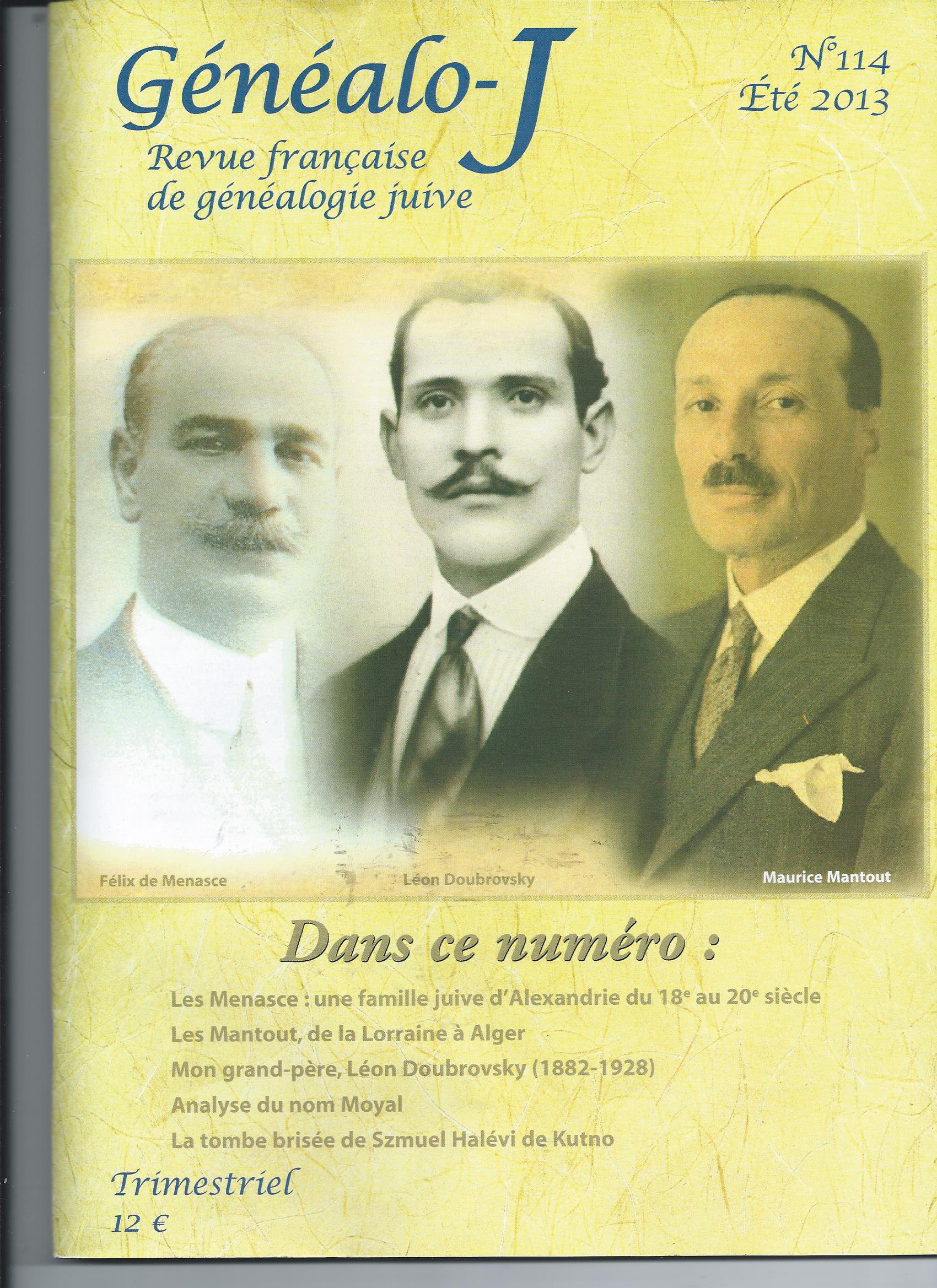
SUMMARY OF # 114
Anaël Lévy
The Menasce family from Alexandria
The Jews of Egypt - both immigrants and natives - have been likened to the ‘Levantines’, these European or Europeanized population who took no interest in the rest of the country. Their ‘levantinism’ would have made unavoidable their departure from Egypt. The history of the Jews in modern Egypt is also considered as the period of their strong participation in the development of the country. Considering the ascent of Arabism and Islam and the expulsion of the Jews in 1956 their integration a posteriori seems but a mere chimera. In order to handle the issue of the Europeanization of the Jews of Egypt we study the Menasce family. Of Sephardic origin they settled in Egypt at the end of the 18th century. If the process of Europeanization is constant the rupture of the links to the country takes place between Félix’s generation (1865-1943) and his son’s Jean (1902-1973); its strongest expression being the ending of the transmission of the Arabic language.
Benedicte Penn
The Mantout, from Lorraine to Algiers.
Maurice Mantout is the main architect of Paris mosque and Avicenne hospital in Bobigny (former French-Muslim Hospital). He was born in Algiers. His father came from a Jewish family arrived from Italy to Lorraine in the 17th century before trying the adventure in Algiers just after the French conquest.
Daniel Chambon
My grand father Léon Doubrovsky (1882-1928).From a family legend he was plentifully fed with over the years the author led an enquiry on his grandfather's life knowing he was a pogrom survivor. By confronting the blurred memories of the accounts heard throughout his childhood and the possibly distorted testimonies of the still alive members of his family to the naturalisation files, civil status documents and others the truth emerges - undoubtedly less beautiful but not less human or endearing.
Marianne Le Morvan
Berthe Weill (1865-1951) the forgotten modern art gallery owner
First woman to open a private art gallery in Montmartre in 1901 the art dealer Berthe Weill remains nonetheless underestimated. At this time Paris was the centre of an unprecedented artistic revolution and she had the impressive lucidity to valorize the works of beginning artists. She was the first to sell paintings by Picasso and discovered the Fauves before the 1905 Automne Salon. Throughout her 35-year career she played an important role in art dealing in spite of the misogynous and anti-Semitic climate of the time.
Mathilde Tagger
An analysis of the name Moyal
The author displays a hypothesis on the formation of this surname used in North-Africa.
Eliane Roos Schuhl
The broken grave of Szmul Halevi de Kutno, Poland
The ligature of the two Hebrew letters alef and lamed and the engraving of a broken pitcher lead us to the name of a man and the tragic fate of a Jewish congregation during WWII.